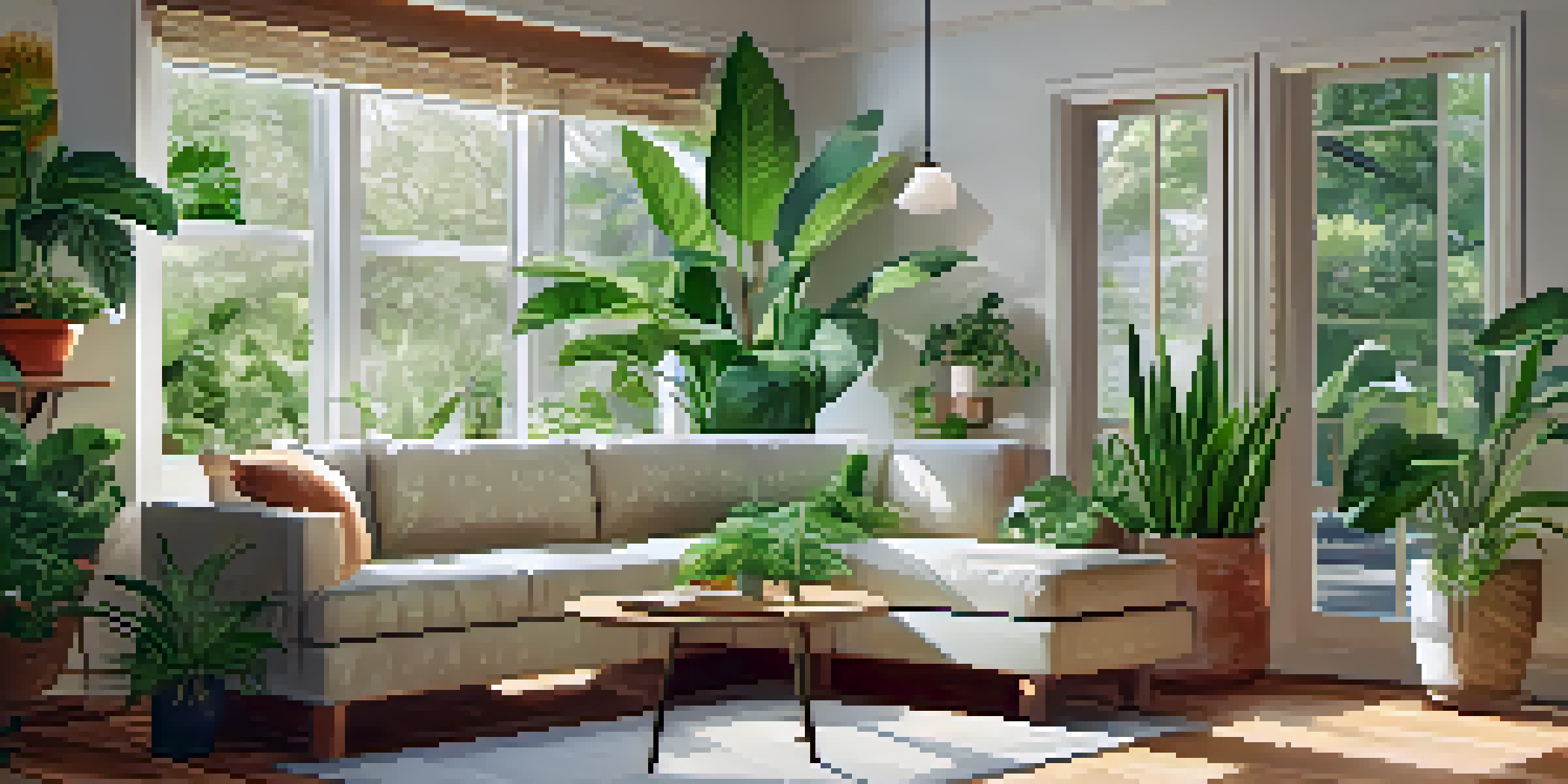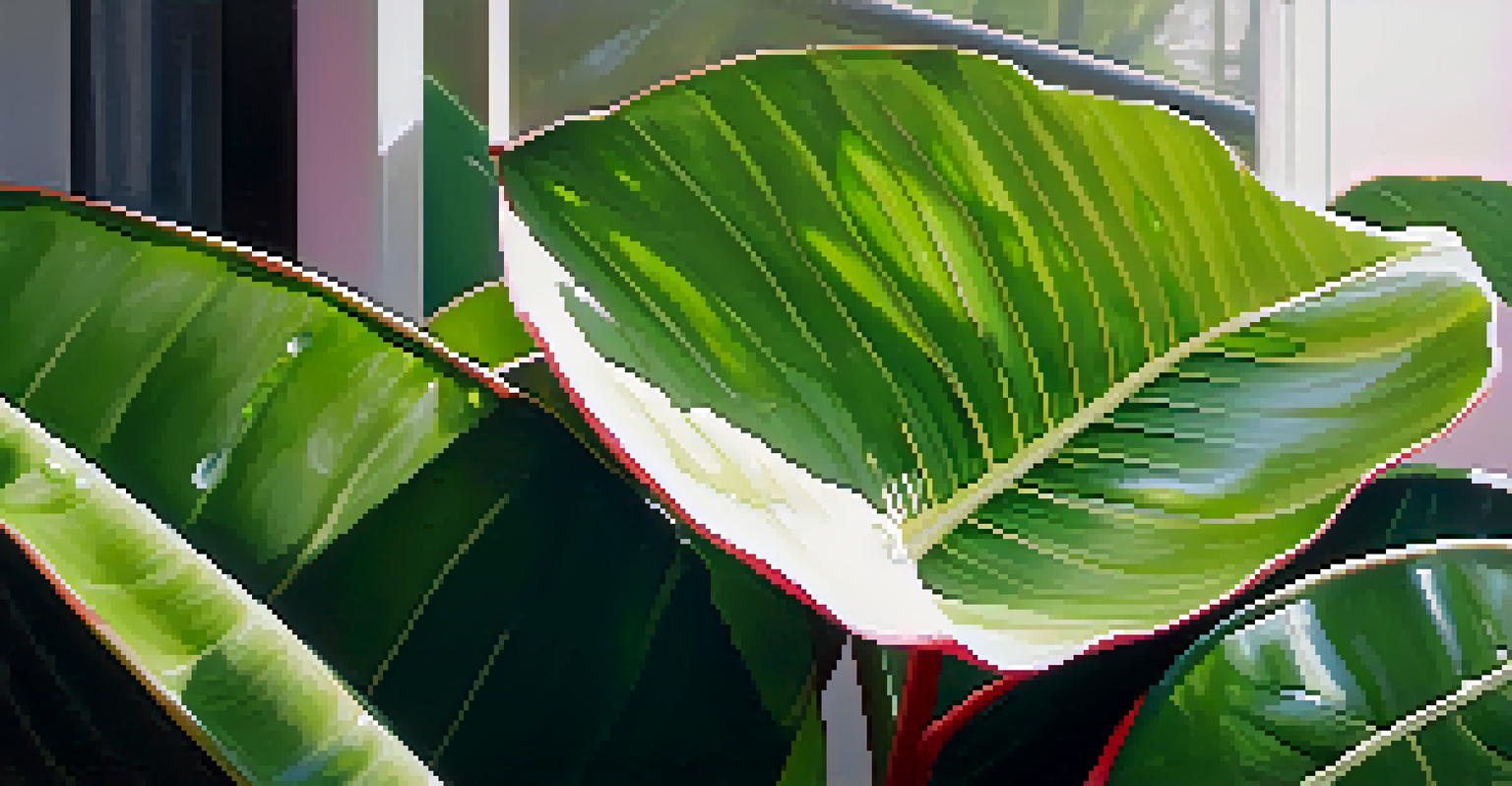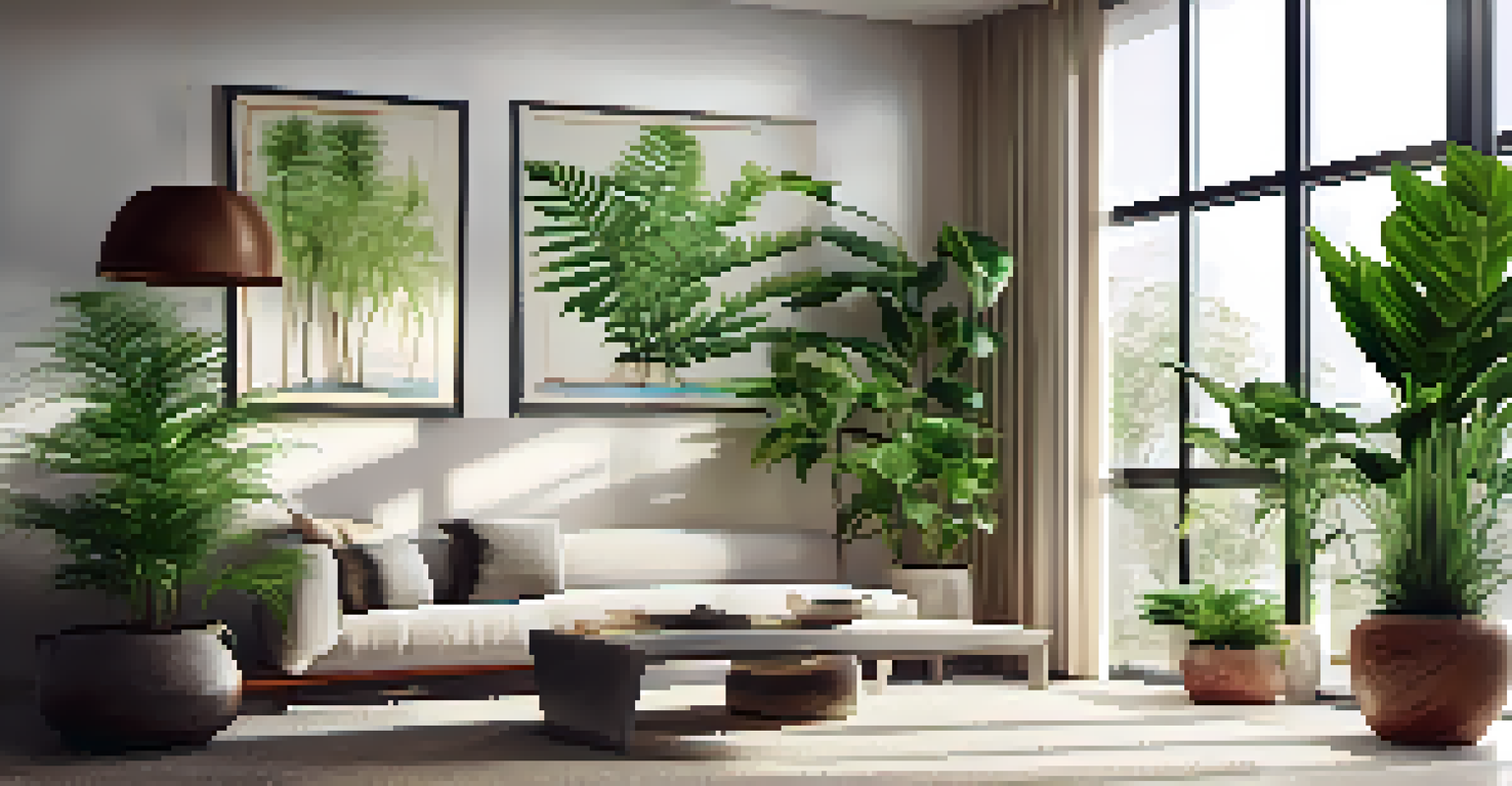The Role of Indoor Plants in Mitigating Allergens and Pollutants

Understanding Allergens and Indoor Pollutants
Indoor allergens and pollutants are common culprits behind various health issues. These can include dust mites, pet dander, mold, and even volatile organic compounds (VOCs) emitted from furniture and cleaning products. Understanding these irritants is crucial for creating a healthier living environment.
Plants are our silent friends, purifying the air and enhancing our environment.
Many people may not realize that indoor air can be more polluted than outdoor air. Factors like poor ventilation, high humidity, and a plethora of household products can contribute to this phenomenon. As a result, the air we breathe inside our homes can harbor harmful substances that trigger allergies and respiratory problems.
This is where indoor plants come into play. They not only beautify our spaces but also have the potential to act as natural air purifiers, making them an excellent choice for anyone looking to improve indoor air quality.
How Indoor Plants Improve Air Quality
Indoor plants improve air quality through a process called photosynthesis, whereby they absorb carbon dioxide and release oxygen. This process not only increases oxygen levels but also helps in removing certain toxins from the air. Plants like the snake plant and spider plant are particularly effective in this role.

Additionally, many indoor plants can absorb harmful VOCs through their leaves and roots. For instance, peace lilies are known to absorb benzene and formaldehyde, common VOCs found in household items. By incorporating these plants into your space, you can significantly reduce the concentration of these pollutants.
Indoor Plants Purify Air Naturally
Certain indoor plants absorb toxins and improve air quality, making them essential for healthier living spaces.
It’s fascinating to note that certain plants can also increase humidity levels, which can help alleviate dry skin and respiratory issues. Plants like the Boston fern thrive in humid environments and can contribute to a more balanced indoor atmosphere.
Best Indoor Plants for Allergy Relief
When it comes to combating allergens, certain plants stand out. For example, the bamboo palm is known for its ability to filter out indoor air pollutants while also acting as a natural humidifier. This makes it an excellent choice for allergy sufferers who need some relief.
The best time to plant a tree was 20 years ago. The second best time is now.
Another fantastic option is the rubber plant, which is not only stylish but also effective at removing toxins such as formaldehyde. Its large leaves are great for trapping dust particles, helping to reduce allergens in the air.
Lastly, consider the spider plant, which is easy to care for and can absorb pollutants like carbon monoxide. Its ability to thrive in various light conditions makes it a versatile choice for any indoor space.
The Science Behind Plants and Allergens
Research shows that certain indoor plants can significantly reduce airborne allergens and pollutants. A notable study conducted by NASA found that plants like the peace lily and the golden pothos can effectively remove toxins from the air in enclosed spaces.
The science suggests that plants not only absorb pollutants but also encourage the growth of beneficial microorganisms in the soil. These microorganisms can further degrade harmful substances, making the air cleaner and safer to breathe.
Best Plants for Allergy Relief
Plants like bamboo palms and rubber plants are particularly effective at filtering allergens and pollutants.
This relationship between plants and air quality highlights the importance of integrating greenery into our indoor environments. By doing so, we can create healthier spaces that promote overall well-being.
Creating an Indoor Oasis with Plants
Transforming your home into an indoor oasis filled with plants can be both rewarding and beneficial. Start by selecting a few of the best air-purifying plants that suit your lifestyle and available light conditions. Don't hesitate to mix and match different varieties for visual appeal and improved air quality.
Consider placing plants in areas where you spend the most time, such as living rooms or bedrooms. This not only enhances the aesthetic but also ensures that you reap the health benefits where you need them most.
Remember to maintain your indoor garden by watering and dusting the leaves regularly. Healthy plants are more effective at filtering air and will thrive in a well-cared-for environment.
Common Misconceptions About Indoor Plants
One common misconception is that all indoor plants release allergens. While some plants can trigger allergies, most indoor plants are safe and beneficial. In fact, many plants help to reduce allergens rather than contribute to them.
Another myth is that you need a green thumb to keep indoor plants alive. In reality, many plants are incredibly low-maintenance and thrive with minimal care. Choosing the right plants for your space can make all the difference.
Common Myths About Indoor Plants
Many believe indoor plants are high-maintenance or allergenic, but most are easy to care for and help reduce allergens.
Lastly, some people believe that indoor plants only purify the air during the day. However, many plants continue to filter toxins even at night, contributing to a healthier indoor environment around the clock.
Tips for Maximizing the Benefits of Indoor Plants
To get the most out of your indoor plants, consider grouping them together. This not only creates a beautiful focal point but also helps increase humidity levels, benefiting both the plants and the air quality.
Ensure you select the right plants for your specific environment, taking into account factors like light, temperature, and humidity. This will help your plants thrive and maximize their air-purifying capabilities.

Lastly, don't shy away from experimenting with different types of plants. Each species has unique properties that can contribute to a healthier indoor atmosphere, so explore and find the perfect combination for your space.